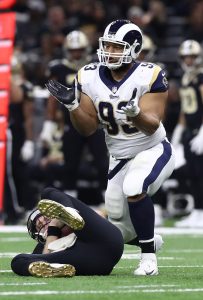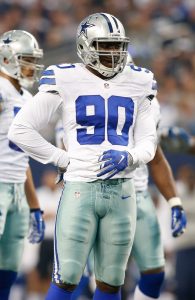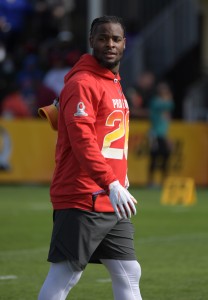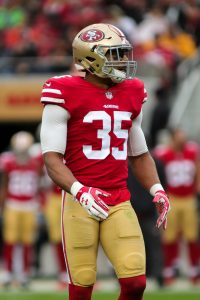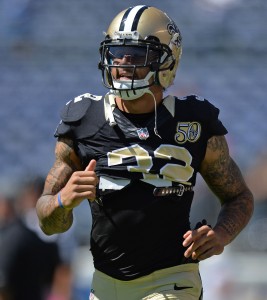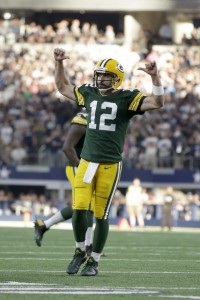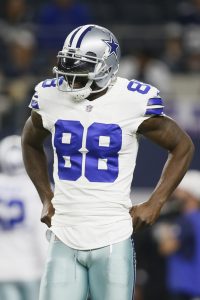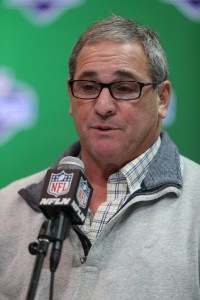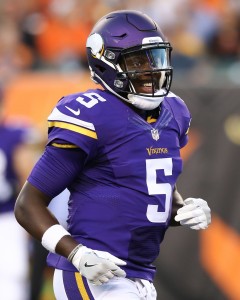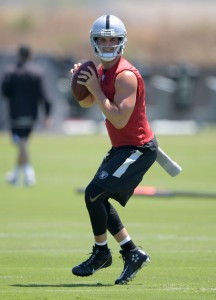Injuries are hitting the Broncos harder than most teams. Starters continue to be moved to IR, with Garett Bolles‘ leg fracture the latest significant issue to emerge. But this is standard in-season fare. Ditto close losses. The Broncos’ bigger-picture problems are not.
The team’s hire of Nathaniel Hackett and trade for Russell Wilson have not produced offensive success; the Broncos’ defense has been largely responsible for their two wins and the team being in position for two more. Hackett and Wilson’s performances keyed both the upset losses to the Seahawks and Colts. Considering what these two figures mean for the franchise’s future, the early returns warrant scrutiny.
 Denver cycled through 11 starting quarterbacks between Peyton Manning‘s retirement and the Wilson trade. First-round picks (Paxton Lynch), second-round picks (Drew Lock), free agent signings (Case Keenum) and trades (Joe Flacco, Teddy Bridgewater) did not produce worthwhile solutions, leading the franchise to pony up for Wilson. The Broncos’ eight-asset trade haul — headlined by 2022 and 2023 first-round picks — for Wilson doubled as one of the most expensive in NFL history, and the team committed to the perennial Pro Bowler via the five-year, $245MM ($124MM fully guaranteed) extension in August.
Denver cycled through 11 starting quarterbacks between Peyton Manning‘s retirement and the Wilson trade. First-round picks (Paxton Lynch), second-round picks (Drew Lock), free agent signings (Case Keenum) and trades (Joe Flacco, Teddy Bridgewater) did not produce worthwhile solutions, leading the franchise to pony up for Wilson. The Broncos’ eight-asset trade haul — headlined by 2022 and 2023 first-round picks — for Wilson doubled as one of the most expensive in NFL history, and the team committed to the perennial Pro Bowler via the five-year, $245MM ($124MM fully guaranteed) extension in August.
Through five games, the Broncos rank 31st in points per game and 28th in EPA per drive. While the team has mounted productive drives, it is consistently crashlanding in the red zone. This continued Thursday night, when the Broncos were 0-for-4 on touchdowns after reaching the red area. The only two instances of a team going 0-for-4 on TDs in the red zone this season, as ESPN.com’s Field Yates points out (on Twitter), came Thursday and in the Broncos’ bizarre Week 1 loss to the Seahawks. The Broncos have scored touchdowns at a ghastly 21.4% clip in the red zone. That is in last place by a wide margin; the 49ers rank 31st at 40%.
A star quarterback suddenly losing his form at 33 would be one of the more interesting on-field storylines to develop in recent memory, so it is worth speculating whether these rampant issues are Wilson-based or if they are more closely tied to the shift to a new offense. The nine-time Pro Bowler ranks 22nd in QBR, and the latter of Wilson’s two interceptions Thursday helped the Colts tie the game in the final minute. Wilson has rarely opted to use his legs this season; the likely Hall of Famer has 73 rushing yards through five games. That is in line with the new pace he set in 2021 (43 carries, 183 yards), when he missed three games. The Seahawks, who derived considerable value from Wilson’s rushing ability during his 10-year stay, believed Wilson’s run-game reluctancy would increase as he aged. Wilson sits fourth in QB history (behind Michael Vick, Cam Newton and Randall Cunningham) with 4,762 rushing yards.
 Wilson’s accomplishments and success leading diminishing Seahawks rosters, at least compared to the franchise’s dominant mid-2010s squads, to the playoffs from 2018-20 point to Hackett being the bigger variable here. The 11th-year passer’s acclimation period to this offense — one that entered Thursday without starting running back Javonte Williams and has played without No. 3 wideout Tim Patrick all season — has been shaky at best. The Broncos’ final offensive play — a fourth-and-1 shotgun set in which Wilson missed an open K.J. Hamler, leading to extensive Hamler post-play frustration — effectively epitomizing the Hackett-Wilson partnership’s first month. Wilson is 2-for-18 on end zone passes this season, per ESPN Stats and Info.
Wilson’s accomplishments and success leading diminishing Seahawks rosters, at least compared to the franchise’s dominant mid-2010s squads, to the playoffs from 2018-20 point to Hackett being the bigger variable here. The 11th-year passer’s acclimation period to this offense — one that entered Thursday without starting running back Javonte Williams and has played without No. 3 wideout Tim Patrick all season — has been shaky at best. The Broncos’ final offensive play — a fourth-and-1 shotgun set in which Wilson missed an open K.J. Hamler, leading to extensive Hamler post-play frustration — effectively epitomizing the Hackett-Wilson partnership’s first month. Wilson is 2-for-18 on end zone passes this season, per ESPN Stats and Info.
This season has brought Hackett’s first play-calling role since he was fired from his Jaguars OC post during the 2018 season. The dual role of play-caller and game manager proved daunting for Hackett, whose 64-yard field goal attempt decision did well to foreshadow the Broncos’ eventful first month, and a game management assistant (the unretired Jerry Rosburg) is now in place. Situational struggles, as the brutal red zone numbers illustrate, have plagued Hackett since Rosburg’s arrival as well. The last of those produced a notable reaction from ex-Wilson teammate-turned-Amazon analyst Richard Sherman. Hackett rebuilt his career in Green Bay, having a hand in Aaron Rodgers‘ back-to-back MVP awards — and receiving steady endorsements from the future Hall of Famer — and interviewed for four HC jobs this offseason. But his Denver tenure is skidding off track early.
The Broncos rebounded from a 2-3 start in Manning’s first season, shifting quickly to some of Manning’s former Colts concepts to close out that 2012 campaign — a 13-3 season. But that team lost to three division champions, whereas none of this Broncos iteration’s blemishes have come against over-.500 competition. With the Broncos’ new ownership group not having signed off on Hackett, the prospect of a one-and-done HC tenure may be greater.
While these decisions are rare, five coaches (Urban Meyer, Freddie Kitchens, Steve Wilks, Chip Kelly and Jim Tomsula) have been fired during or after their first season. Meyer, Wilks, Kelly and Tomsula all lost 11-plus games; Kitchens’ firing came more as a result of dysfunction. Following Thursday’s result, BetOnline.ag moved Hackett to the top of its first-coach-fired prop odds. With the Broncos tied to Wilson through at least 2025 (due to guarantees), Hackett’s job security will shift to the forefront if his offense continues to produce at this level.
Can the Broncos re-emerge as a more stable operation after their mini-bye? Or have Hackett’s early-season missteps become too big of a concern? How much of the Denver offense’s issues are Wilson-driven compared to the system in which he now finds himself? What does this all mean for the franchise’s long-term outlook? Weigh in on the Broncos’ strange start in PFR’s latest Community Tailgate installment.
